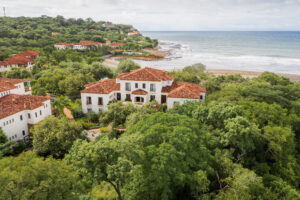Pleasure Before Business

Chopin monument in Warsaw’s Lazienki Park
Poland wasn’t on my bucket list. Apparently, it was on Ms K’s.
Next week, I’m in London for business. I get crushed by jet lag to Europe, so Ms K agreed to spend the prior week with me somewhere in Europe. I was looking forward to revisiting any of the great continental cities – Rome, Paris, Madrid, Geneva, Barcelona. Even Dublin, Brussels, or Edinburgh. But Warsaw? In Poland? Wasn’t Warsaw destroyed by the Germans at the end of WWII?
It was. Almost entirely. But what Ms K knew that I didn’t was that after the war, in the 1950s, when Poland finally broke from Communism and became a free and democratic state, the long-suffering but hardworking Polish people rebuilt Warsaw (and many other smaller cities) from the ground up. And happily, the designers and architects of this massive urban renewal rebuilt Warsaw as it was before the war – when it was a handsome and well-planned urban center with so much more to offer residents and visitors than almost any city I can think of.
The restoration wasn’t superficial. The urban designers, landscape architects, and engineers that put Warsaw back together again did so with an evident respect for everything that is wonderful about old (medieval) cities but including all the modern elements that make modern cities efficient.
Had Ms K not read me bits and pieces about the city’s history from her guidebook, I would have never known these beautiful, intricately designed old buildings were not, as they looked, 300 to 400 years old!
Our flight was 10 hours. Ms K found us a flight on LOT Polish Airlines, the only one with a non-stop from Miami to Warsaw. The pricing was good, so she put us in business class, which turned out to be equivalent to first class. The ride was smooth and the service was excellent, but I had a difficult time sleeping because my rebuilt knee just wasn’t having this idea of sleeping in a coffin-sized space.
On the drive from the airport to our hotel in the center of the city, we looked at the passing landscape. Green hills, greener forests, and swatches of manicured lawns and farmhouses. And the sun was bright, which is always a plus when one visits a new place.
Ms K is legendary for her carefulness with money, which has sometimes been a problem for me when the hotels she books look and feel like the residue of cost-conscious research. In this case, it looked like she had pulled out all the cautionary stops. The Hotel Bristol is elegant and almost imposing.
“Wow!” I said. “This must be the most expensive hotel in the city!”
“It’s the finest hotel,” she said. “But it’s not the most expensive.” That distinction apparently belongs to the Raffles Europejski, which she nodded at – a similarly sized, similarly impressive hotel just across the street.
If the outside was imposingly majestic, the inside had all the features and fixtures you would expect to find in the best old five-star hotels in the world, with a big, beautiful lobby leading to several bars and a restaurant, a coffee shop, and a library. An entire floor (below the main floor) was dedicated to a nicely equipped gym. Another entire floor offered visitors a world-class spa.
If all that wasn’t enough, as Amex-whatever cardholders, we were upgraded to a suite with great views of the city.
Do you know how nice hotel beds – the plush, multi-pillowed, blindingly white-sheeted beds – look when you’re exhausted from a long plane ride? Well, that’s what I saw in that room. I practically leaped into the bed without even taking off my shoes. I was fast asleep before the valet shut the door.
At two in the afternoon, we met Marta, our tour guide, a friendly, talkative local historian in her early forties. She arrived with Martin, a serious but courteous chauffeur who drove a very cushy and impressive 2023 BMW 760 Series sedan. We sat in the back, naturally. The seats were super comfortable, but the greatest surprise was that the headrests were like pillows. I lay my head back and almost fell asleep again.
We were at our destination, Stare Miasto (Warsaw’s Old Town) 10 minutes later.
Stare Miasto is an old-looking section of the rebuilt city that has none of the problems of some old European cities (crumbling sidewalks, scary corners, random trash heaps, and unwelcome odors). It has a clean look and a quaint personality equal to cities like Stockholm and Brussels and Bruges. Marta pointed out restaurants, bookstores, and historical monuments that we could come back and see another time. Then she walked us through Lazienki Park, which could very well be the nicest city park I’ve ever been to.
As I said, the weather was great and stayed great for the next three days, which gave us the chance to walk through other parks, other sections of the city, and to visit a good number of recommended tourist sites, such as Plac Zamkowy (Castle Square), Zamek Krolewski (the Royal Palace), Katedra sw. Jana (St John’s Cathedral), Stara Pomaranczarnia (the old Orangery, now a museum), and the Belvedere Palace.
Two highlights. Highly recommended.
* The POLIN Museum of the History of Polish Jews, a modern, interactive museum on the site of the former Warsaw ghetto. Similar in some ways to our own Holocaust Museum in DC, it commemorates the cultural heritage of the Jews in Poland (who comprised half of the six million Jews killed by the Nazis).
* The Warsaw University Library Rooftop Gardens. Unlike any gardens I’ve ever seen. Two acres of plants and ferns and vines and flowers densely covering the entire top of this monolithic building that rises nine or 10 stories from the ground. What makes it so special is the contrast between the architecture of the building – sort of half Brutalist, half Steampunk – and the softness of the gardens. I don’t have time to properly describe it. But if you get to Warsaw, you must check it out.

 MarkFord
MarkFord












